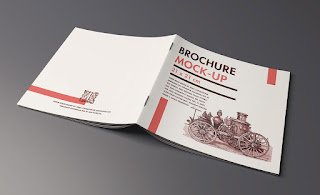The Printing Press
He who first shortened the labor of copyists by device of
movable types was disbanding hired armies, and cashiering most kings and senates, and
creating a whole new democratic world: he had invented the art of printing.
Sartor Resartus, 1833)
(Thomas Carlyle,
Sartor Resartus, 1833)
(Thomas Carlyle,
The Renaissance spread to Germany, France, England, and Spain in the late
fifteenth and the sixteenth centuries. In its migration northward, Renaissance culture
adapted itself to conditions unknown in Italy, such as the growth of the monarchical state
and the strength of lay piety. In England France, and Spain, Renaissance culture tended to
be court-centered and hence anti-republican. In Germany, no monarchical state existed but
a vital tradition of lay piety was present in the Low Countries. The Brethren
of the Common Life, for example, was a lay movement emphasizing education and practical
piety. Intensely Christian and at the same time anticlerical (shades of what was to
come!), the people in such movements found in Renaissance culture the tools for sharpening
their wits against the clergy -- not to undermine faith, but restore its ancient apostolic
purity.
Northern humanists were profoundly devoted to ancient learning but nothing
in northern humanism compares to the paganizing trend associated with the Italian
Renaissance. The northern humanists were chiefly interested in the problem of the ancient
church and the question of what constituted original Christianity.
Two factors operated to accelerate the spread of Renaissance culture after
1450: growing economic prosperity and the printing press. Prosperity -- the result of
peace and the decline of famine and the plague -- led to the founding of schools and
colleges. In these schools the sons of gentlemen and nobles would receive a humanistic
education imported from Italy. The purpose of such an education was to prepare men for a
career in the church or civil service.
Sometime in the 13th century, paper money and playing cards from China
reached the West. They were "block-printed," that is, characters or pictures
were carved into a wooden block, inked, and then transferred to paper. Since each word,
phrase or picture was on a separate block, this method of reproduction was expensive and
time-consuming.
The extension of literacy among laypeople and the greater reliance of
governments and businesses upon written records created a demand for a less-costly method
of reproducing the written word. The import of paper from the East as well as
"block-books" (see above), were major steps in transforming the printing of
books. However, woodcuts were not sufficiently durable as they tended to split in the
press after repeated use. Furthermore, a new block had to be carved for each new
impression, and the block was discarded as unusable as soon as a slightly different
impression was needed.
By the middle of the 15th century several print masters were
on the verge of perfecting the techniques of printing with movable metal
type. The first man to demonstrate the practicability of movable type was
Johannes Gutenberg (c.1398-1468), the son of a noble family of Mainz,
Germany. A former stonecutter and goldsmith, Gutenberg devised an alloy of
lead, tin and antimony that would melt at low temperature, cast well
in the die, and be durable in the press. It was then possible to use and reuse the
separate pieces of type, as long as the metal in which they were cast did not wear down,
simply by arranging them in the desired order. The mirror image of each letter (rather
than entire words or phrases), was carved in relief on a small block. Individual letters,
easily movable, were put together to form words; words separated by blank spaces formed
lines of type; and lines of type were brought together to make up a page. Since letters
could be arranged into any format, an infinite variety of texts could be printed by
reusing and resetting the type.
By 1452, with the aid of borrowed money, Gutenberg began his famous Bible
project. Two hundred copies of the two-volume Gutenberg Bible were
printed, a small number of which were printed on vellum. The expensive and beautiful
Bibles were completed and sold at the 1455 Frankfurt Book Fair, and cost the equivalent of
three years' pay for the average clerk. Roughly fifty of all Gutenberg Bibles survive
today.
In spite of Gutenberg's efforts to keep his technique a secret, the
printing press spread rapidly. Before 1500 some 2500 European cities had acquired presses.
German masters held an early leadership, but the Italians soon challenged their
preeminence. The Venetian printer Aldus Manutius published works, notably editions of the
classics.
The immediate effect of the printing press was to multiply the output and
cut the costs of books. It thus made information available to a much larger segment of the
population who were, of course, eager for information of any variety. Libraries could now
store greater quantities of information at much lower cost. Printing also facilitated the
dissemination and preservation of knowledge in standardized form -- this was most
important in the advance of science, technology and scholarship. The printing press
certainly initiated an "information revolution" on par with the Internet today.
Printing could and did spread new ideas quickly and with greater impact.
Printing stimulated the literacy of lay people and eventually came to have
a deep and lasting impact on their private lives. Although most of the earliest books
dealt with religious subjects, students, businessmen, and upper and middle class people
bought books on all subjects. Printers responded with moralizing, medical, practical and
travel manuals. Printing provided a superior basis for scholarship and prevented the
further corruption of texts through hand copying. By giving all scholars the same text to
work from, it made progress in critical scholarship and science faster and more reliable.
Source: http://www.historyguide.org/intellect/press.html


Comments
Post a Comment